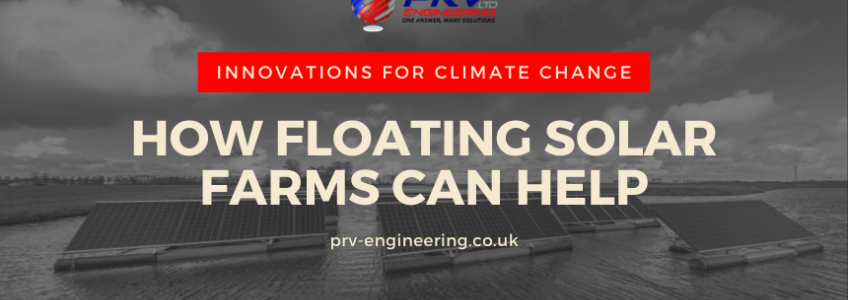Floating solar farms are becoming increasingly popular, especially in countries with high population density and limited available land. Floating solar farms gained popularity in 2018 and continue to do so today with many countries taking the lead, including China, India, the Netherlands and Singapore which is the focus of this article.
Singapore Fighting Climate Change With Floating Solar Farms
Despite being one of the smallest countries in the world – less than half the size of London – it’s one of the biggest per capita carbon dioxide emitters in Asia (report by AFP). With the large population and limited space to build power stations, Singapore is anchoring more than a hundred thousand solar panels to the seabed.
One of the latest solar farms stretches off the coast of Singapore into the Johor Strait. Here, they’ve anchored 13,000 solar panels to the seabed capable of producing five megawatts of electricity. That’s enough to power almost 1,500 flats for a whole year.
Another project in the development phase is much larger involving a 122,000-panel solar farm at Tengeh Reservoir. According to reports, it could be completed later this year and will be one of the biggest floating solar farms in Southeast Asia.
Why Floating Solar Farms?
Even though Singapore is a financial hub, the country is small with no rivers fast enough for hydroelectricity and the wind in is not consistently strong enough for wind turbines. The solution is solar power but with limited space to build on land, they opted for installing solar panels at sea and on its reservoirs.
Jen Tan, senior VP and head of solar in Southeast Asia at Sembcorp Industries, said: “After exhausting the rooftops and the available land, which is very scarce, the next big potential is actually our water area.”
Singapore announced a “green plan” that included measures to quadruple solar energy use in the country by 2% by 2025, and 3% by 2030. That’s enough to power 350,000 households per year. As positive as this may be, it could negatively impact the country’s large shipping industry.
How Does A Floating Solar Farm Work?
Floating solar farms involve an eco-friendly method of generating electric power. It combines marine technology and renewable energy technology where they attach solar photovoltaic panels to a buoyant platform that rests on the water’s surface. These platforms are usually on calmer water such as ponds, dams, lakes or reservoirs. From there, electricity is sent through underwater cables to a transmission tower.
These renewable energy farms operate at a higher efficiency as the solar panels are installed on the water which helps cool the equipment. It’s expected that floating solar farms could follow a similar upward trajectory as solar power.
Recommended: ‘Is Concentrated Solar Power The Next Big Thing?’
Benefits Of Floating Solar Farms
According to four environmental impact studies by the Korea Environmental Policy and Evaluation Institute (KEI) from 2011 to 2019, floating solar facilities caused no harm to the environment. In fact, as of 2018, the floating solar farms in the country has reduced carbon emissions by 52,414 tons. What other benefits are there?
- Promote land-use efficiency as the floating systems are set up on water
- It requires no construction on land or conversion of forest and farmlands
- Provides high-energy yield due to the natural cooling effect of the water
- Saves water resources by reducing the evaporation of water in the reservoir as the floating solar system blocks sunlight
- It uses an eco-friendly system so natural fish farms can thrive under the platform
For more interesting articles on engineering, manufacturing and technology, follow our blog. You can also join us on Twitter, Facebook or LinkedIn using the hashtag #PRVtech.


The Future Of Energy Storage Systems - PRV Engineering Blog July 14, 2022 at 12:56 pm
[…] Singapore’s floating solar farms […]